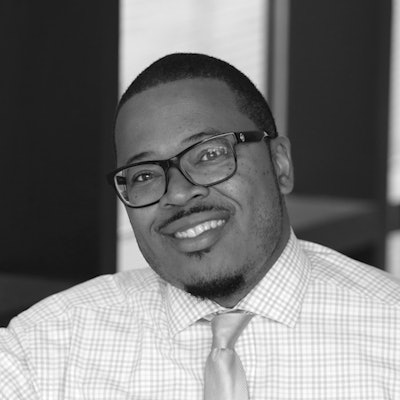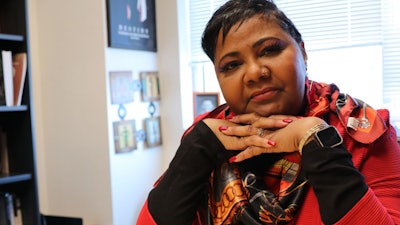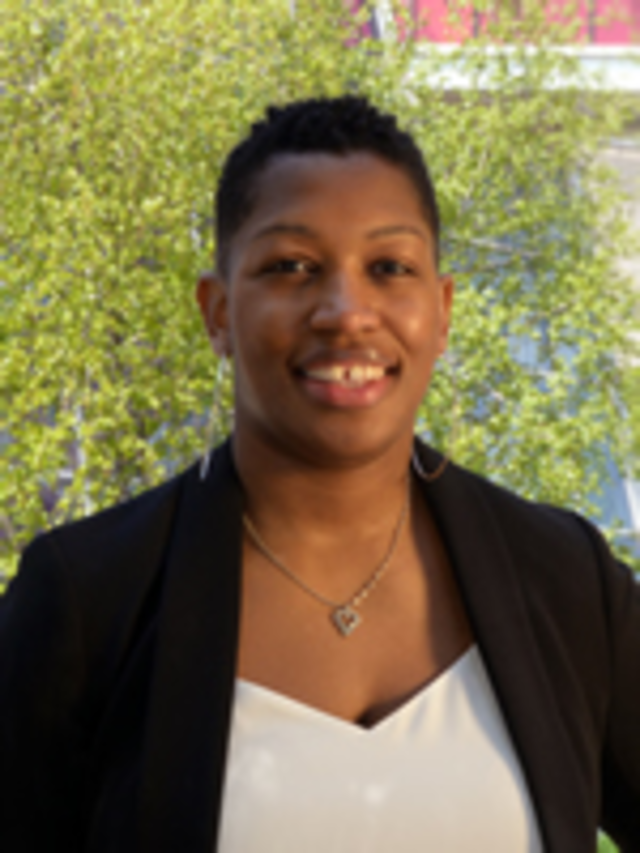A Clarion Call for Change: Four Black Scholars Reflect on the Critical Need for More Educators of Color

[ad_1]
By Drs. Erik M. Hines, Donna Y. Ford, Edward C. Fletcher Jr., Tanya J. Middleton
 Dr. Erik Hines
Dr. Erik Hines
Hines: I grew up in a medium-sized city in the south that was mostly white, but also had a sizable percentage of Blacks, Cubans, Puerto Ricans, and Dominicans. I have had Black teachers since preschool. In fact, I had Black teachers in kindergarten through elementary school, except for one of my classes in fourth grade. Reflecting back on my elementary education, I believe having Black teachers not only shaped my identity to have pride in being a Black American, but it also normalized having Black teachers as being a way of life. In other words, I erroneously thought students across the country had Black teachers. However in junior high school, it was a Black American school counselor that influenced my career trajectory into the counseling profession. He spent time with students, created after school programs, and encouraged us to do well academically as it would create career and financial opportunities. Also, he held multiple positions as a program director for a program focused on helping underrepresented students pursue postsecondary opportunities and he was a night school principal. When I got to community college and was doing my own career exploration, he was the first person I thought about and I pursued school counseling because it was a profession that gave me the opportunity to work with students around finding their calling (or career) in life.
Ford  Dr. Donna Y. Ford
Dr. Donna Y. Ford
I recall living in a very Black neighborhood in Cleveland, Ohio. but did not have a teacher who looked like me until the fifth or sixth grade. On the first day of school that year, a Black man introduced himself as our teacher. I remember being stunned and beaming with pride for two reasons: (1) he was Black like me and (2) he resembled my father. I excelled in school (e.g., grade skipped, an A student, Spelling Bee winner) to please my mother. For the first time, I was very eager to please my teacher – a Black teacher! I had a few Black teachers and substitutes in middle and high school; my reaction was the same; their opinions of me mattered. I also devoted even more effort to make them proud of this Black student. When teachers were Black, my mother was more comfortable attending school events, and calling them with questions. I think the Black teachers lived near my neighborhood because I would see them in the one grocery store near my street. Before I could name my feelings, as I reflect, my belief is the same. #RepresentationMatters. I had so many careers in mind, but was discouraged by school counselors who pushed me to major in STEM. For the most part, I resent my P-12 educators for not spending much time interpersonally (one-on-one) and curricular-wise encouraging me and classmates to major in education.
Fletcher: I did not have a Black teacher throughout my entire K-12 school experience. And, the most disturbing part of my reflection on this is that I did not know what I was missing. I grew up in a predominately white small city in the Midwest and, thus, did not expect to have an opportunity to be educated by a Black teacher. It Dr. Edward Fletcher Jr. was not until my master’s program at the University of Missouri-Columbia that I had my first Black instructors. Two of the three Black instructors (one woman and one man) that I encountered were in my field of study. From the very first day of class, I was motivated to succeed in their courses. I also wanted them to mentor me, particularly the Black male instructor, as I could see my future self in him. In fact, I kept in touch with the Black male instructor for years and had the opportunity to tell him how much of an impact he made on me as an emerging scholar and educator.
Dr. Edward Fletcher Jr. was not until my master’s program at the University of Missouri-Columbia that I had my first Black instructors. Two of the three Black instructors (one woman and one man) that I encountered were in my field of study. From the very first day of class, I was motivated to succeed in their courses. I also wanted them to mentor me, particularly the Black male instructor, as I could see my future self in him. In fact, I kept in touch with the Black male instructor for years and had the opportunity to tell him how much of an impact he made on me as an emerging scholar and educator.
Middleton
I had the pleasure of being exposed to Black teachers early, growing up in a suburb near Cleveland, Ohio. My first grade teacher was one who exuded “Blackness” or the images of what one might imagine racial pride to be. Her classroom walls were covered with pictures of exceptional Black leaders, for example, Thurgood Marshall, Martin Luther King Jr., and Rosa Parks. She often played music by Bob Marley, and we read poetry books by Shel Silverstein (i.e., A Light in the Attic, Falling Up). At that time, my white classmates were in the majority, however, she created an environment that was inclusive while instilling a sense of Black pride that resonates with me until this day. My fifth-grade teacher within this same district was also a Black female, and her imprint was more direct. While she wore a lot of African jewelry and regalia, my fondest memory of her was a challenge that she posed to me after overhearing a conversation about the movie Malcolm X. While she commended Hollywood for the presentation, she spoke about the “whitewashing” that often occurs and, therefore, encouraged me to read the autobiography for myself to gain a level of wisdom and understanding from the man and not through the glorification of an edited movie. I responded to the challenge and read the book. Subsequently, I was motivated to be a seeker of truth and one who grew to have pride as a Black educator. I don’t think that the importance of this representation was as profound back then as it is now. The interactions planted seeds of wisdom, courage, and pride that I did not fully grow to appreciate until I made my own path into academia and began to sow seeds for others pursuing degrees in higher education.
Mirrors Matter: Teachers of Color Matter  Dr. Tanya Middleton
Dr. Tanya Middleton
The demographics of P-12th grade students is rapidly changing, with non-white students comprising the majority of students at 54.24%. However, the education field remains predominantly female (76%), and white – in traditional public schools (80%), public charter schools (68%), and private schools (85%). A litany of factors contribute to this persistent reality. Our focus is not to delineate the reasons but, instead, to address: (a) the damage often done when minoritized students do not have minoritized educators; and (b) the positive effects/outcomes when educators share their race, ethnicity, culture, and lived experiences.
As Black caregivers and professionals, we are constantly exploring the extent to which our families, friends, and students of color have academic, socio-emotional, and psychological mirrors throughout their developmental stages. This exploration requires adding anti-racist and culturally responsive frameworks (lens) to what they learn and experience. For example, we add culture to everything associated with gifted and talented education, Advanced Placement, special education, discipline, college and career readiness, and counseling. In this same spirit, we interrogate measures, theories, and curriculum to expose “cultureblindness” and cultural assaultiveness. These acts of interrogation and resistance are accompanied by providing education professionals with the knowledge, skills, and dispositions to do no harm, to pull out the best in students, and to infuse cultural pride into students, like the experiences of Hines and Middleton. Their teachers personified mirrors visually while also being intentional in this endeavor.
Sims’ mirrors and windows analogy for literature is the same as having educators reflect what students of color look like. Throughout P-12 education, some Black, Hispanic, Asian, and Native American students may never have a same-race teacher as was the case of Fletcher and the reverse for Middleton and Hines. Relatedly, like Ford, having a Black teacher was and is infrequent.
13 Benefits of Having Same-Raced Educators – Teachers, Counselors, and Administrators
We are proposing that racial and ethnic educators are not just meaningful for students of color; they are important for white students, who have benefited from racial and ethnic matching since the first school and classroom doors opened. Consider this: The education profession is extensively white and white students are generally high achievers including outperforming Black and Hispanic students, according to the extensive volume of work on achievement gaps. One of our favorite studies is on parsing the achievement gap by Barton and Coley. Their meta-analysis found that of the 16 correlates that significantly contribute to the Black-white achievement gap, lack of rigor in schools was number 1. To be clear, this is a function of low expectations – deficit thinking and low rigor. Lack of rigor concerns low challenge, the absence of critical thinking, and less access to advanced courses. Also significant were teacher inexperience (novice) and high turnover when assigned to teach Black students. As we have indicated countless times in our individual and collective works, higher education programs and professional development must intentionally and proactively focus on anti-racist and culturally responsive strategies and materials. For almost 20 years, Ford has taught such a course to undergraduate and graduate students, and the aforementioned content is infused in all other courses, credentials (e.g., certificates and endorsement/licensure), degrees, and professional development.
Our attention to racial and ethnic matter is based on Easton-Brooks stellar book Ethnic Matching: Academic Success of Students of Color. Easton-Brooks unpacks this phenomena to create urgency among decision makers to recruit and retain more minoritized educators, and to witness academic gains and non-academic improvements (e.g., racial and ethnic pride, self-efficacy/agency) for minoritized students.
Next, with ongoing reflection on our experiences (and those of families, friends, and colleagues), we turn to 13 important influences of racial and ethnic matching: the list of impacts is by no means exhaustive.
(1) Vocational agency – inspired to become successful education professionals.
(2) Academic agency – desires to perform at higher levels, runs for leadership roles (e.g., student council, debate team, student newsletter).
(3) Belongingness increases – a sense of belonging, feeling welcomed and valued, increases when students of color share the background of educators. The learning environment, curriculum, materials, and resources align with the learning styles of minoritized students.
(4) Racial pride – a strong(er) commitment to one’s’ racial and ethnic group(s). When adopting Cross’ theory, we are referring to ‘internalization’.
(5) Resistance to negative peer pressures – feels empowered to reject negative messages and pressures (e.g., bullying, teasing, name calling) from peers from their own and other racial and ethnic groups.
(6) Critical thinker – wants to and is able to interrogate and resist negative social messages and pressures (in books, curriculum, social media, advertising)
(7) Dedicated to culturally responsive socio-cultural change – seeks to be a change agent in all settings.
(8) Recruits allies – engages with white students and/or adults to be proponents of anti-racism, equity, and cultural competence.
(9) Engages families to be change agents – works with family members to be culturally conscious and empowered.
(10) Recruits minoritized students and adults to become educators – committed to integrating the education field with more educators of color.
(11) Improved communication – studies and our experiences show increased and more seamless communication with minoritized students, families, and communities improve. Language differences, misunderstandings, and miscommunication decrease. Such educators serve as cultural and linguistic brokers.
(12) Increased family involvement – families of color who feel (and are) marginalized may be more comfortable, more welcome, more willing to volunteer and otherwise be involved at school events when educators share their race and ethnicity.
(13) Continuous career exploration– educators and counselors must be committed to helping students of color find a college or postsecondary institution that leads to a successful career that matches their interests, gifts, and talents from Pre-K until graduation from high school.
Our experiences as Black former P-12 students and professors are informed by our lived experiences. We are able to empathize with students of color. With the exception of Ford, the co-authors are from the same generation. All four come from different communities in the U.S, Noteworthy is that we have ended up in the same profession, related disciplines, and professional passions – school counseling, gifted and talented education, college and career readiness, and mental health. We share the goal of closing achievement, opportunity, and access gaps. We are dedicated to supporting the socio-emotional, psychological, and cultural well-being of students of color and their families. We are committed to diversifying the education force. We are dedicated to contributing to constructive discourse on anti-racism, equity, and cultural competence among the predominantly white education force.
Dr. Erik M. Hines is associate professor and program coordinator of counselor education at Florida State University.
Dr. Donna Y. Ford is Distinguished Professor of Education and Human Ecology at The Ohio State University
Dr. Tanya J. Middleton is a clinical assistant professor in the Department of Educational Studies at The Ohio State University
Dr. Edward C. Fletcher Jr., is the Education and Human Ecology Distinguished Professor in the Department of Educational Studies at The Ohio State University.
[ad_2]
Source link
